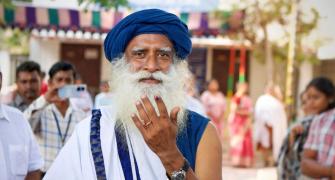Designers Shraddha Nigam and Mayank Anand tell us why they're committed to the cause of empowering Indian weavers through their label.

At a time when an increasing number of young designers are trying to make clothes that 'fit in', Shraddha Nigam and Mayank Anand are designing for 'normal people'.
Their collection -- The Textile Brigade -- which was recently unveiled at the Lakme Fashion Week Winter/Festive Resort saw a range of comfortable outfits that appealed to women and men of all sizes.
"Not everyone has a perfect body. We want people to embrace their body shape and wear clothes that make them feel good about who they are," reasons Shraddha Nigam about the inspiration for their collection.
Having started their career four years ago in 2011 with little experience of apparel designing, the designer duo has had their fair share of struggles.
In a candid chat with Rediff.com, actors-turned designers Shraddha Nigam and Mayank Anand talk about the challenges faced, the mistakes they made and how they are making a small but significant difference.
You guys have never opted for a celeb showstopper. Can you please tell us the reason?
Shraddha: Our clothes and designs are meant for normal people. We don't think a celebrity showstopper can do justice to our collection.
Our buyers are people who understand the importance of Indian fabrics and feel proud about wearing them.
We come from the land of khadi and silks, why not boast about them?
Mayank: We are not just a label. We are designers with a creative and social purpose.
Through each of our designs and shows, we aim to spread the beauty of our looms in India and the world.
But we are very concerned about the state of Indian weavers.
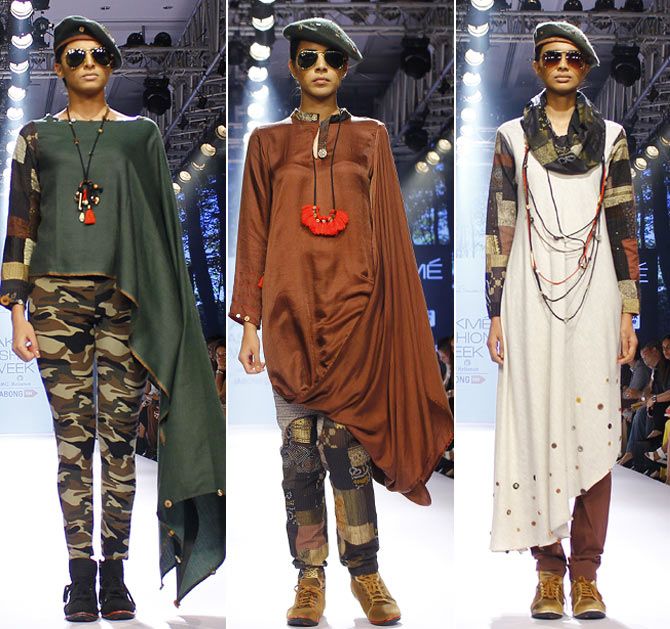
Why are you so concerned about the weavers?
Shraddha: We have been meeting officials from the textile ministry of Maharashtra, Andhra Pradesh and Madhya Pradesh and we learned that there were nearly 45 lakh weavers in the country until a few years ago, but the figure has now dropped to 35 lakhs.
There are reports in the media stating that there are about 2 crore weavers in the country.
When we asked the officials to give us an exact figure, they gladly accepted that they don't have it.
It is embarrassing to know that even the textile ministry doesn't have the exact figures.
Mayank: We have interacted with more than 100 weavers from across the length and breadth of the country -- Maharashtra, Madhya Pradesh, Rajasthan and Kashmir.
Each of them have shared their stories of struggle and if you were to visit their work sites and understand the labour that goes into the making of a fabric, you would think twice before buying and rejecting a handloom creation.
The workers' feet bleed while handling the yarn.
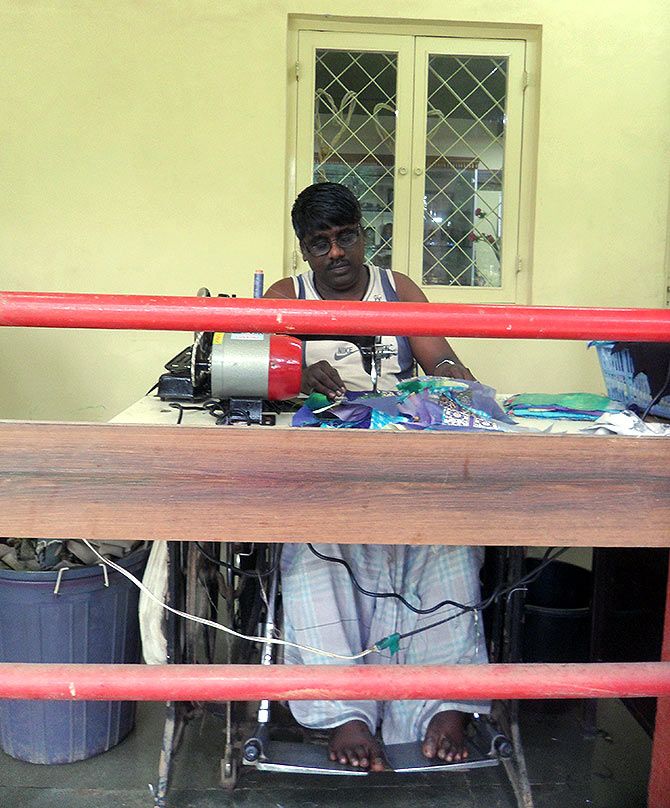
What are the challenges Indian weavers face?
Mayank: The state of Indian weavers is deteriorating by the day.
When we started working with them a few years ago, we used to reach out to them through NGOs in Mumbai and Ahmedabad.
When we actually visited the site, we realised the difficult conditions they work in. We are not talking of companies, but independent weavers.
They work in extremely poor conditions and most of them suffer physical injuries during the process.
After all the hard work, when weavers do not get their due in the market, they lose heart and look at other avenues for income.
Shraddha: Two years ago, one of our weavers' introduced us to his son and he clearly told us that he would not take after his father's profession. He said it did not pay well and that he would rather work in a city.
It broke my heart that we are losing so many young artists.
Last season this boy came to us to say that he had changed his mind and was now helping his father approach more buyers and get a fair price.
Although it's a small change but it brought hope.
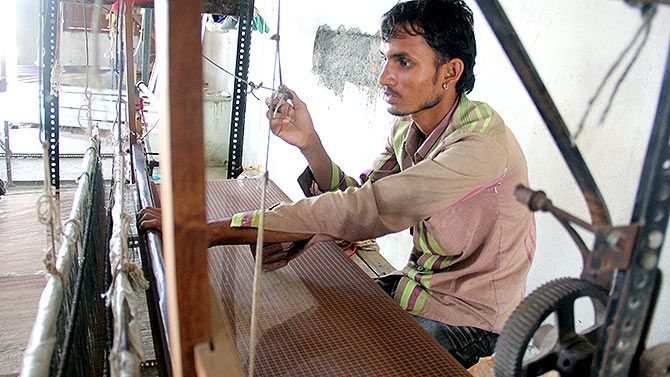
What according to you has caused the decline in our country?
Shraddha: The consumer market is price driven.
Handwoven fabrics and designs are highly priced compared to machine made yarn or designs that are mass produced.
Add to this competition from Chinese markets who are copying the art and providing cheap quality substitutes in polyester and mixed fabrics.
It is difficult to explain the difference to the end user who is looking for quality outfits in an affordable price range.
Mayank: Handwoven fabrics often come with manual errors -- sometimes there is a fine stub or a different colour thread that breaks the pattern -- which is immediately rejected by the buyer or becomes the reason to negotiate the price.
Shraddha: Since most weavers are not well educated, it is easy to trick and exploit them for their hard work.
A talented weaver who despite having the knowledge of yarns, dyeing, and looming techniques cannot compete with machines that can duplicate designs and mass produce to meet the demands at a competitive price.
All these factors have collectively discouraged our weavers.
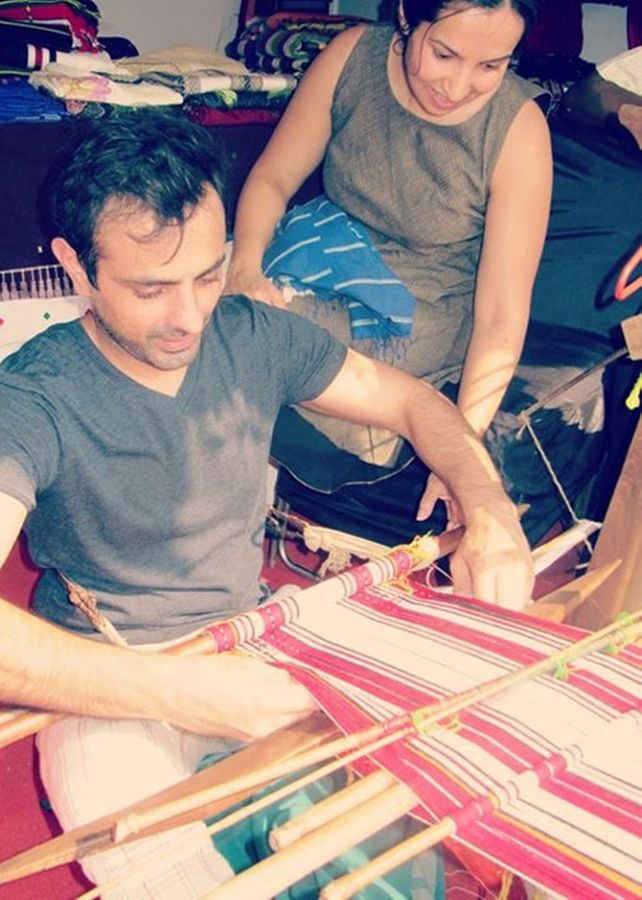
You started off as a GenNext designer at Lakme. How has the journey shaped up for you in the last five years?
Shraddha: When we started, we did not have a proper plan. We were just a passionate couple who loved clothes and wanted to explore our love for Indian looms.
We made mistakes, we lost a lot of money but we sprang back with a stronger resolve to succeed.
We started off with a few lakhs, today we have a turnover that is touching a crore.
We are taking things slow because we are committed to a social cause -- we want to empower our weavers and find dignified employment for the less privileged.
Currently, we are working with tailors from Bangalore-based Cheshire Disability Trust -- these people are wheelchair bound and work on electronic machines.
It feels great to empower them and make them a part of our cause.
What were the mistakes you made? What are your learnings?
Mayank: When we started, I wanted to make leather shoes for men because I believed I had a great taste.
Everyone loved the shoes I wore and I was very passionate about it.
I was so blinded by the idea that I had not studied the market at all.
I did not know if people were willing to buy the kind of shoes I was making.
I put in Rs 10 lakhs and lost all of it within a year. I did not make any money.
Eventually I sold some of them to my friends but I learned the importance of homework.
I still want to make men's footwear, but I will not jump at the idea until I have a plan in place.
Shraddha: In the first two years, we did not have a proper plan. We were new and still learning.
When we went to the market to buy fabric, we realised that unless we bought in bulk, we would be paying a bomb, but we could not afford to buy in large measures.
In 2011, when we started, I remember ordering a 30 metre piece and haggling with a provider to bring down the price per metre.
I would send youngsters to purchase asking them to say they were college students working on a project to get a better price.
Every little rupee we saved felt like a huge bonus.
Earlier we used to deal with middlemen who would take commission.
It took us time to understand how the market functions, who the players are and how to get the best deal.
We know how to upcycle fabrics and make the best use of them because we value the hard work of the weavers.
Today, we order more than 1000 metres from the same provider because we have been able to scale higher -- we cater to 40 stores across India.
We also retail in UAE, Kuwait, Kenya, Italy and Singapore.
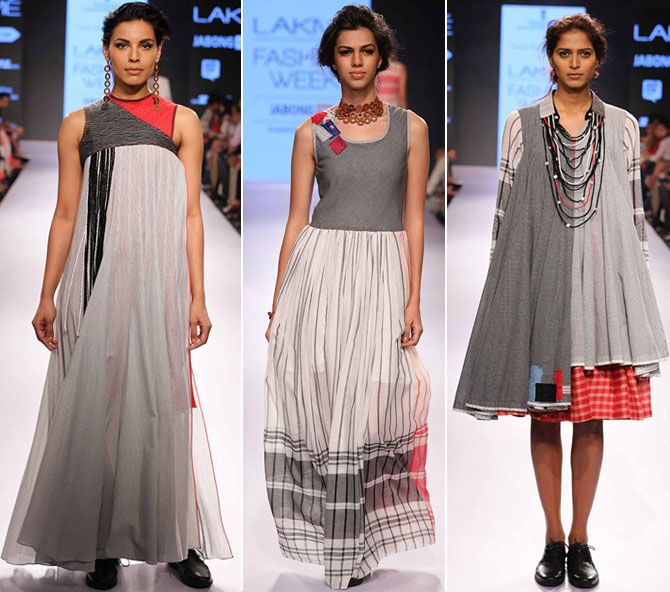
How do you think one can distinguish between a Chinese and original Indian fabric?
Mayank: That's where the problem is. You can never make out the difference by merely looking at it.
You have to feel the fabric to know the difference.
Shraddha: A polyester or Chinese-made outfit will damage your skin, you will feel uncomfortable wearing it for long.
An original khadi, cotton or silk will make your skin feel lively.
You have to start wearing more of it to fall in love with it.
What is your advice to aspiring designers?
Shraddha: Have your own voice. Do not copy. More importantly, do not cheat your customers.
It is okay if you want to sell an outfit at a competitive price, but do not misguide them with incorrect information.
Your advice to readers
Shraddha: When we go to Italy, we find so many international buyers appreciating Indian looms.
They love our scarves and drapes and find it hard to believe that these are so beautiful and woven by hand. They come back asking for more.
Wish we could have the same feeling back home.
Mayank and Shraddha: Our appeal to Indians is to buy Indian and wear Indian.







